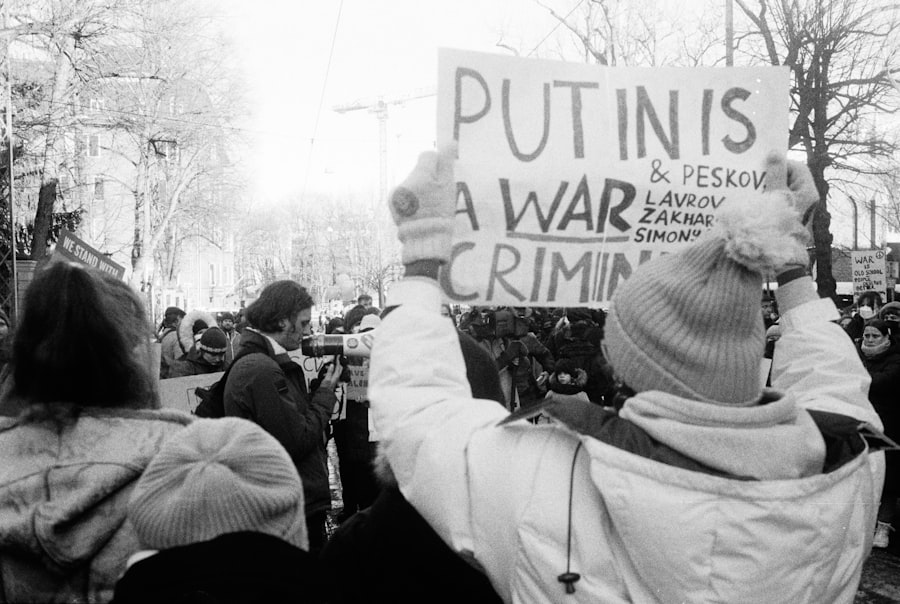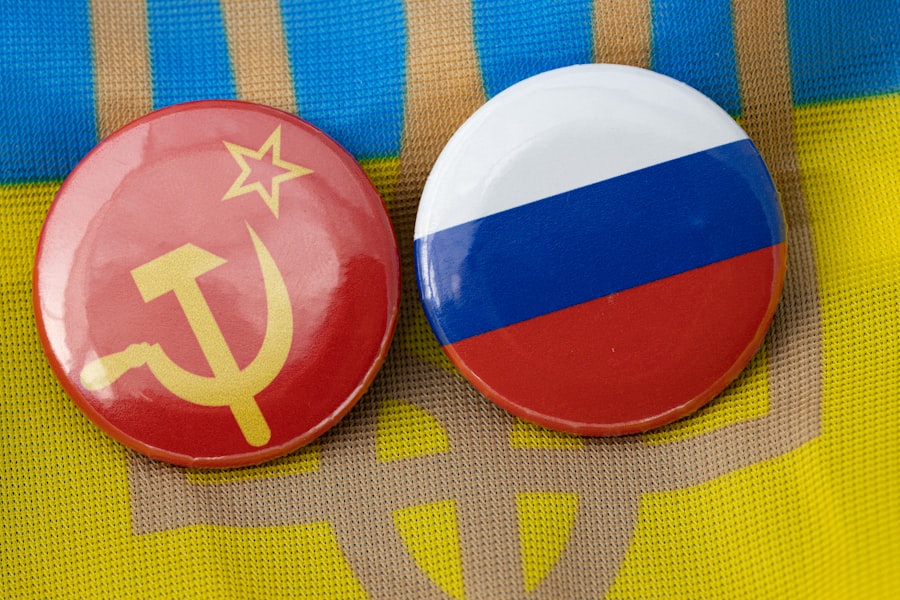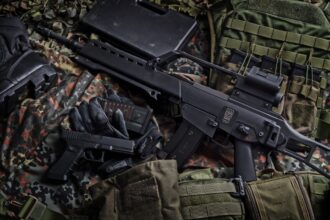The Cuban Missile Crisis, a pivotal moment in Cold War history, has long been shrouded in secrecy and speculation. Recently declassified documents have shed new light on the events that transpired during those tense thirteen days in October 1962. These documents reveal the extent of the United States’ intelligence operations and the high-stakes negotiations that took place between President John F.
Kennedy and Soviet Premier Nikita Khrushchev. The newly available information illustrates how close the world came to nuclear catastrophe, as both superpowers navigated a precarious path of brinkmanship. Among the most striking revelations from these documents is the detailed account of the U.S.
surveillance efforts that uncovered Soviet missile installations in Cuba. The intelligence community’s use of U-2 spy planes provided critical photographic evidence that confirmed the presence of nuclear missiles just 90 miles from American shores. This intelligence not only informed Kennedy’s decision-making but also underscored the importance of reconnaissance in modern warfare.
Furthermore, the declassified documents highlight the internal debates within the Kennedy administration, showcasing differing opinions on how to respond to the crisis, from military action to diplomatic negotiations.
Key Takeaways
- The Cuban Missile Crisis: Declassified documents reveal the tense negotiations and secret communications between the US and Soviet Union during the crisis.
- The Rosenbergs and Soviet Spies: Newly revealed information sheds light on the extent of Soviet espionage in the US and the role of the Rosenbergs in passing atomic secrets to the Soviets.
- The CIA’s Covert Operations: Classified reports detail the CIA’s covert activities in various countries, including coup attempts and assassination plots.
- The Berlin Wall: Secret plans and strategies used by both the US and Soviet Union to gather intelligence and maintain control over East and West Berlin are uncovered.
- The Korean War: Uncovered intelligence and strategies highlight the role of espionage and covert operations in the conflict, including the use of codebreakers and double agents.
The Rosenbergs and Soviet Spies: Newly Revealed Information
The case of Julius and Ethel Rosenberg remains one of the most controversial espionage trials in American history. Newly revealed information has provided fresh insights into their alleged role in passing atomic secrets to the Soviet Union during the early years of the Cold War. The Rosenbergs were convicted in 1951 and executed in 1953, but questions about their guilt and the fairness of their trial have persisted for decades.
Recent declassifications have included previously sealed testimonies and FBI files that paint a more complex picture of their involvement. These documents suggest that while Julius Rosenberg was indeed involved in espionage activities, Ethel’s role may have been exaggerated by prosecutors seeking to secure a conviction. The newly uncovered evidence indicates that Ethel may have been more of a passive participant than an active conspirator.
Additionally, the revelations about other Soviet spies operating within the United States during this period highlight a broader network of espionage that extended beyond the Rosenbergs, complicating the narrative of their trial and execution. This new information has reignited debates about justice, loyalty, and the lengths to which governments will go to protect national security.
The CIA’s Covert Operations: Classified Reports

The Central Intelligence Agency (CIA) has long been associated with covert operations that have shaped global events, often operating in secrecy to achieve U.S. foreign policy objectives. Recently declassified reports have unveiled a range of clandestine activities undertaken by the agency during the Cold War, revealing both successes and failures in its mission to counter perceived threats from communism.
These reports provide a glimpse into the CIA’s strategic thinking and operational tactics, which often blurred ethical lines in pursuit of national interests. One notable operation that has come to light is the CIA’s involvement in the overthrow of foreign governments deemed hostile to U.S. interests.
From Iran in 1953 to Chile in 1973, these operations were characterized by manipulation, propaganda, and sometimes outright violence. The declassified documents detail how the CIA employed local assets and engaged in psychological warfare to destabilize regimes, often with little regard for the long-term consequences. The revelations raise important questions about accountability and the moral implications of such interventions, as well as their impact on U.S.
relations with other nations.
The Berlin Wall: Secret Plans and Strategies
| Metrics | Data |
|---|---|
| Length of the Berlin Wall | 155 km |
| Height of the Berlin Wall | 3.6 m |
| Number of escape attempts | at least 5,000 |
| Number of successful escapes | over 5,000 |
| Number of deaths at the Berlin Wall | at least 140 |
The construction of the Berlin Wall in 1961 was a defining moment in Cold War history, symbolizing the division between East and West. Declassified documents have recently surfaced that outline the secret plans and strategies employed by both East German authorities and Western powers during this tumultuous period. These documents reveal not only the motivations behind the wall’s construction but also the international response that followed its erection.
The East German government viewed the wall as a necessary measure to prevent mass emigration to the West, which had been draining its population and undermining its economy. However, Western leaders saw it as a stark representation of communist oppression. The declassified materials include diplomatic communications that illustrate how Western powers, particularly the United States, grappled with their response to this provocative act.
The documents reveal discussions about military readiness and potential responses should tensions escalate, highlighting the precarious balance of power during this era.
The Korean War: Uncovered Intelligence and Strategies
The Korean War (1950-1953) was a significant conflict that pitted North Korea and its communist allies against South Korea and United Nations forces led by the United States. Recently uncovered intelligence reports have provided new insights into military strategies employed by both sides during this brutal war. These documents reveal not only tactical maneuvers but also the broader geopolitical implications of the conflict, which set the stage for future U.S.-China relations.
One key aspect highlighted in these reports is the role of intelligence gathering in shaping military operations. Both sides relied heavily on reconnaissance to inform their strategies, with North Korea utilizing Soviet support while UN forces adapted to rapidly changing battlefield conditions. The declassified intelligence also sheds light on how miscalculations and underestimations on both sides contributed to prolonged fighting and significant loss of life.
As historians analyze these newly available materials, they gain a deeper understanding of how intelligence shaped decisions that would resonate for decades.
The Space Race: Hidden Missions and Discoveries

The Space Race between the United States and the Soviet Union was not merely a competition for technological supremacy; it was also a battleground for ideological dominance during the Cold War. Recently declassified documents have unveiled hidden missions and discoveries that played crucial roles in this high-stakes rivalry. These revelations illustrate how both nations sought to outpace each other in space exploration while simultaneously gathering intelligence on one another’s capabilities.
Among these hidden missions were several covert satellite launches aimed at gathering intelligence on military installations and missile capabilities. The U.S. developed advanced reconnaissance satellites that provided critical information about Soviet activities, while also pushing the boundaries of technology in space exploration.
The declassified documents reveal how these missions were often shrouded in secrecy, with public announcements masking their true purpose. This duality of exploration and espionage highlights the complex nature of the Space Race, where scientific achievement was intertwined with national security concerns.
The Vietnam War: Declassified Military Tactics and Operations
The Vietnam War remains one of the most contentious conflicts in American history, marked by deep divisions within society and significant loss of life. Declassified military tactics and operations from this period have recently come to light, providing new perspectives on how U.S. forces conducted their campaigns against North Vietnamese troops and Viet Cong guerrillas.
These documents reveal not only operational strategies but also the challenges faced by military leaders in adapting to an unconventional warfare environment. One significant aspect highlighted in these declassified materials is the use of air power and chemical agents like Agent Orange, which had devastating effects on both combatants and civilians alike. The documents detail how military planners justified these tactics as necessary for achieving victory while grappling with ethical implications that would haunt future generations.
Additionally, insights into troop morale and public sentiment during this period illustrate how domestic opposition influenced military strategy and decision-making at higher levels.
The Arms Race: Revealed Nuclear Weapons Programs
The arms race between the United States and the Soviet Union was characterized by an escalating competition for nuclear superiority that defined much of the Cold War era. Recently revealed information about nuclear weapons programs has provided a clearer picture of how both superpowers developed their arsenals while navigating complex political landscapes. These revelations underscore not only technological advancements but also the strategic calculations that drove each nation’s pursuit of nuclear capabilities.
Declassified documents reveal extensive details about various nuclear tests conducted by both sides, including information on yield estimates and technological innovations aimed at enhancing missile accuracy and delivery systems. Furthermore, these reports highlight how espionage played a critical role in understanding each other’s capabilities, with both nations investing heavily in intelligence-gathering efforts to assess potential threats. As historians analyze these newly available materials, they gain insight into how fear and competition shaped global security dynamics during this tumultuous period.
The Iron Curtain: Classified Diplomatic Negotiations
The term “Iron Curtain” symbolizes not only physical barriers but also ideological divides that characterized post-World War II Europe. Recently declassified diplomatic negotiations have provided valuable insights into how Western powers navigated their relationships with Eastern Bloc countries during this period of heightened tension. These documents reveal behind-the-scenes discussions that shaped foreign policy decisions and influenced international relations throughout Europe.
The declassified materials include correspondence between diplomats that illustrate differing approaches to dealing with communist regimes while maintaining alliances among NATO members. This complexity underscores how diplomacy was often fraught with challenges as leaders grappled with competing interests and ideological commitments during a time when every decision carried significant consequences.
The Proxy Wars: Newly Released Information on Soviet and US Involvement
Throughout the Cold War, proxy wars became a common strategy employed by both superpowers as they sought to expand their influence without direct confrontation. Newly released information has illuminated U.S. and Soviet involvement in various conflicts around the globe, revealing how these wars were often fueled by ideological battles rather than direct military engagement between the two nations themselves.
This information provides critical context for understanding regional conflicts that shaped global politics during this era. From Afghanistan to Angola, these proxy wars were characterized by support for local factions aligned with either communist or capitalist ideologies. Declassified documents detail how both superpowers provided military aid, training, and resources to bolster their respective allies while attempting to undermine opposing forces.
This strategy not only prolonged conflicts but also contributed to instability in regions where local grievances were often overshadowed by superpower rivalries, leading to long-lasting consequences that continue to resonate today.
The Cuban Revolution: Secret CIA Involvement and Operations
The Cuban Revolution marked a significant turning point in Latin American politics as Fidel Castro’s rise to power challenged U.S. interests in the region. Recent revelations about secret CIA involvement during this period have unveiled covert operations aimed at undermining Castro’s government before it solidified its grip on power.
These operations highlight how U.S. policymakers viewed Cuba as a critical battleground in their fight against communism. Declassified documents reveal plans for sabotage, propaganda campaigns, and even assassination attempts against key figures within Castro’s regime.
The CIA’s efforts were driven by fears that Cuba could become a model for revolutionary movements across Latin America, prompting urgent action from Washington. However, these clandestine operations often backfired, leading to increased support for Castro among Cubans who viewed U.S. interference as imperialistic aggression rather than legitimate concerns about communism.
As historians examine these newly available materials, they gain insight into how Cold War dynamics shaped U.S.-Cuba relations for decades to come. In conclusion, declassified documents from various Cold War events provide invaluable insights into a complex era defined by secrecy, espionage, and ideological conflict. From pivotal moments like the Cuban Missile Crisis to covert operations across Latin America and beyond, these revelations continue to shape our understanding of history while prompting critical discussions about ethics, accountability, and international relations.
In a recent exploration of Cold War history, new revelations have emerged that shed light on the intricate espionage activities between the superpowers. These findings have sparked renewed interest in the era’s clandestine operations and their lasting impact on international relations. For those intrigued by the covert dynamics of the Cold War, an insightful article titled “The Hidden Strategies of Cold War Espionage” delves deeper into these shocking revelations. You can read more about it by visiting this article. This piece provides a comprehensive analysis of the newly uncovered information and its implications for our understanding of this pivotal period in history.
CHECK THIS OUT! 📽️🎞️ Hollywood’s Secret War: How the CIA Rewrote Movies
FAQs
What are the Shocking Cold War revelations?
The Shocking Cold War revelations refer to the declassified information and documents that have revealed previously unknown or hidden aspects of the Cold War era, including espionage, covert operations, and diplomatic maneuvering.
What kind of information has been revealed?
The declassified information has revealed details about espionage operations, covert actions, diplomatic negotiations, and the extent of the rivalry and conflict between the United States and the Soviet Union during the Cold War.
How have these revelations impacted our understanding of the Cold War?
These revelations have provided a more nuanced and detailed understanding of the Cold War, shedding light on previously unknown events and actions that shaped the geopolitical landscape of the time.
What are some examples of Shocking Cold War revelations?
Examples of Shocking Cold War revelations include the extent of Soviet espionage in the United States, the CIA’s covert operations in various countries, and the secret negotiations and agreements between the superpowers.
Why is it important to declassify Cold War-era documents?
Declassifying Cold War-era documents allows for a more accurate historical record and helps to hold governments accountable for their actions. It also provides researchers and historians with valuable insights into this pivotal period in world history.




